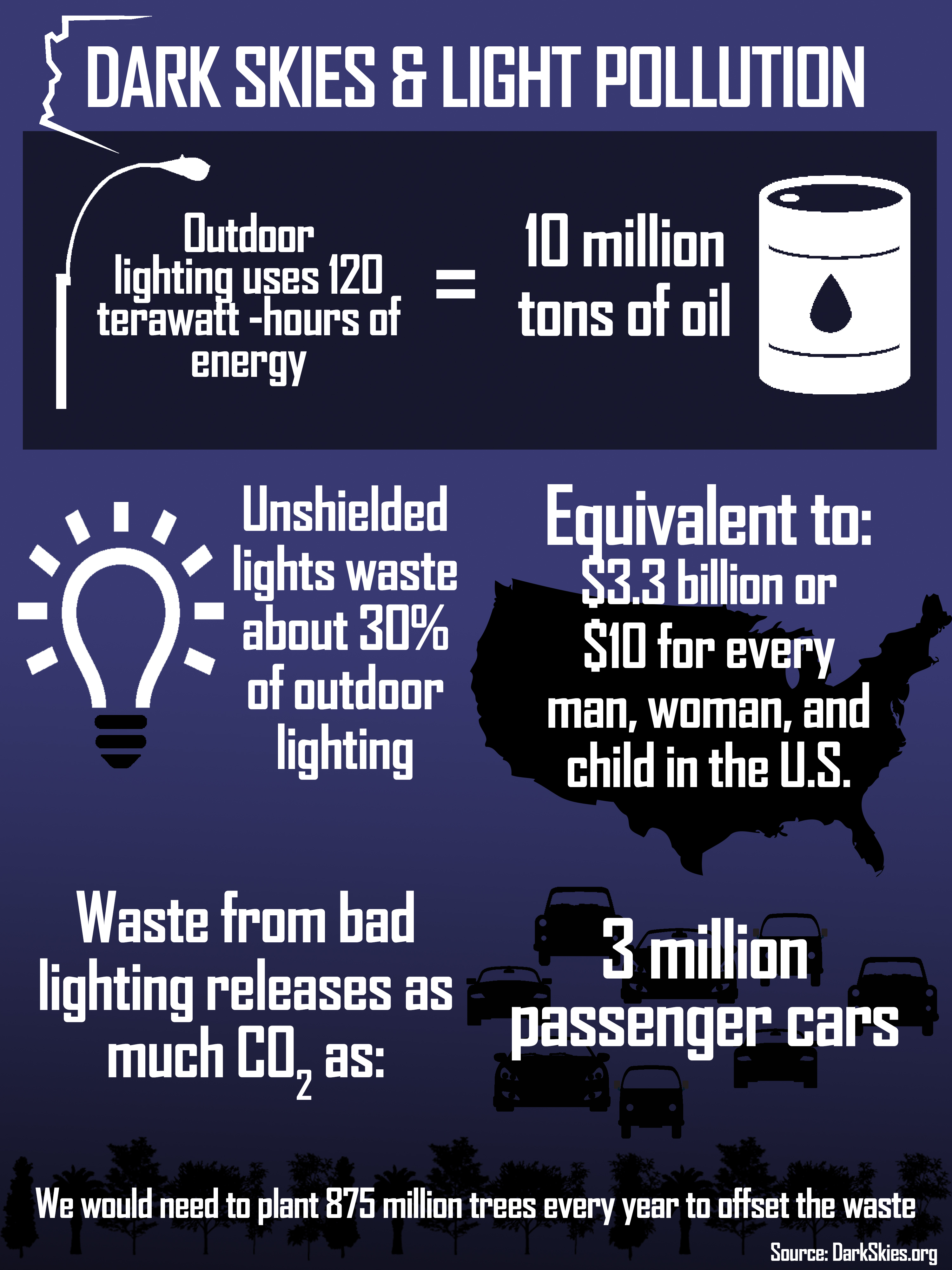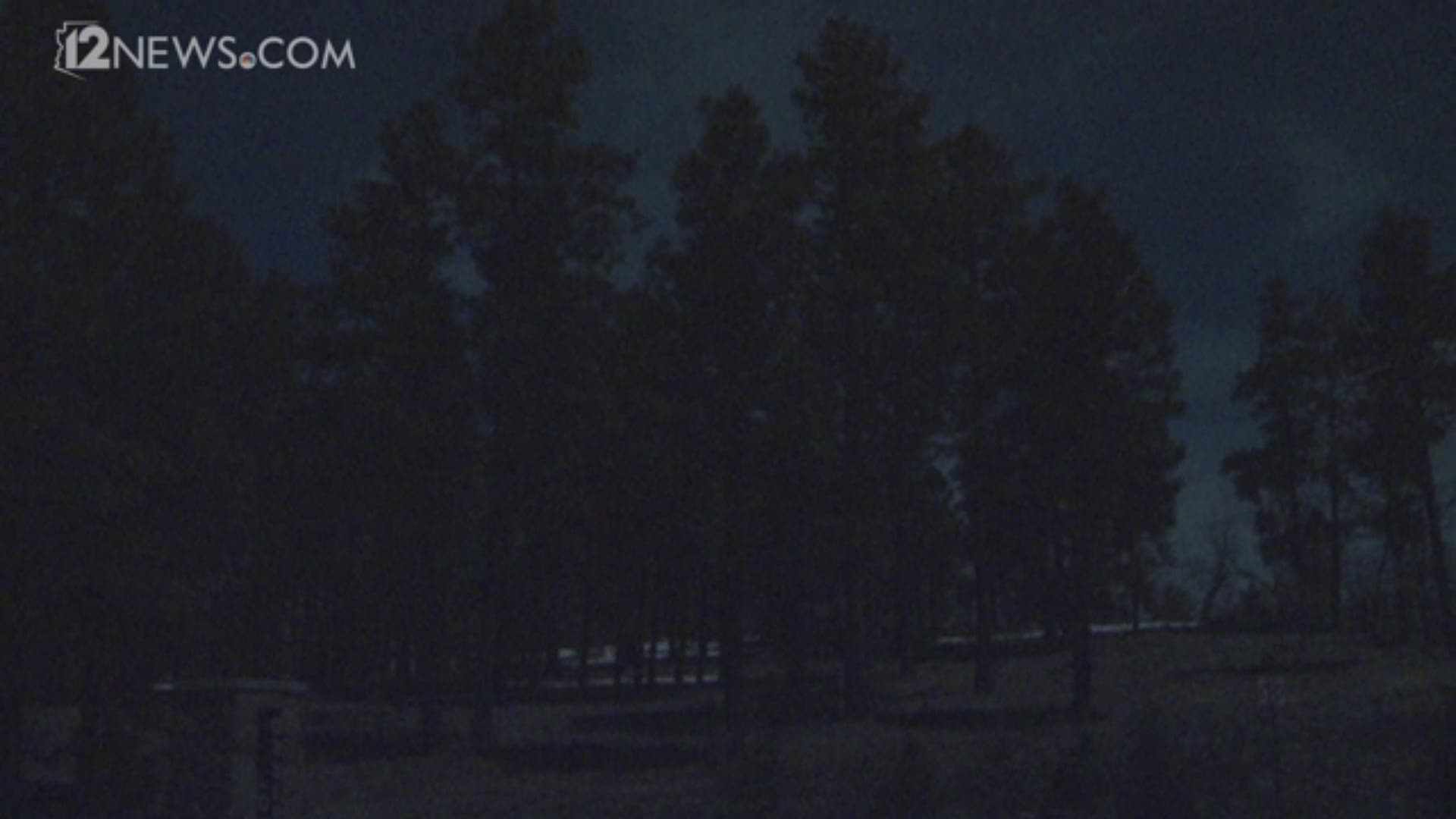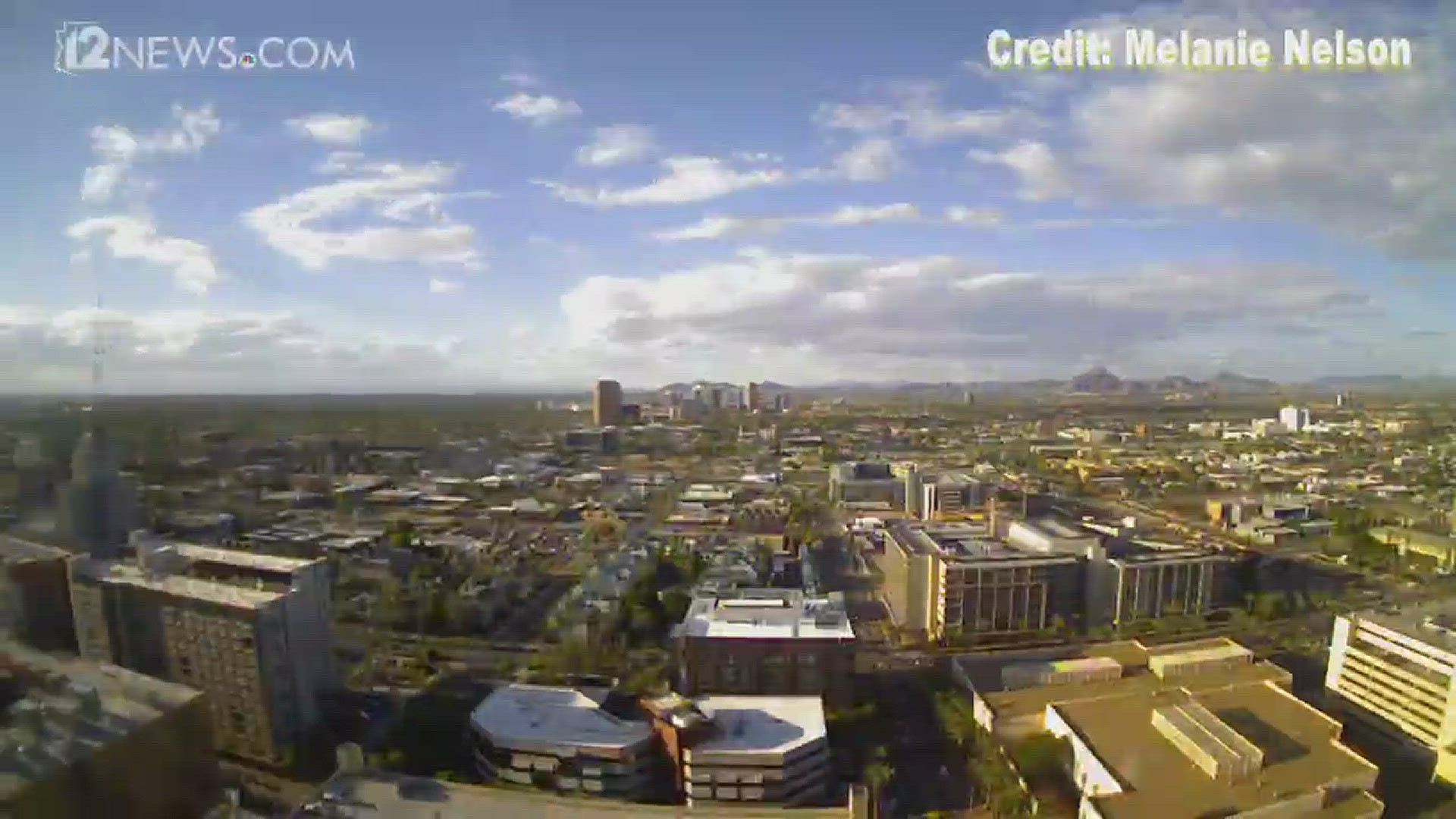When the sun goes down the star-filled sky shines bright, but you might just have to travel to one of the internationally recognized dark-sky communities -- far away from light pollution -- to see it.
Light pollution -- right up there with air, water and land pollution -- is the inappropriate or excessive use of artificial light which eliminates the ability to see the beautiful night sky.
Jeff Hall, director of Lowell Observatory, said light pollution can hinder astronomers' research efforts.
"We study incredible faint objects from distant galaxies to little tiny asteroids that occasionally come in and impact the Earth," he said. "So even small amounts of artificial skyglow have a detrimental effect on the research mission of the observatories and the state."
According to the International Dark-Sky Association, as this type of pollution continues to expand, millions of kids will never see the Milky Way from where they live.
Stephen Tegler, professor and chair of the physics and astronomy department at NAU, said getting an unimpeded look at the night sky is an experience everyone should enjoy.
"The ability, not just to do science, but to go out and appreciate the aesthetics of it -- to be awed by the Milky Way is not to be underestimated," he said.
PHOTOS: Milky Way over Arizona
The IDA works to combat the inability to see the stars through promoting responsible lighting practices and education. In doing this, the IDA has recognized international dark-sky communities – prominent in Arizona -- that have shown dedication to preserving the night sky for generations to come.
But it’s not just about seeing the stars. A dark sky without light pollution can benefit the environment, energy preservation as well as your health and safety, the IDA says.
Here’s what you should know about Arizona's dark-sky communities, the dangers of light pollution and the benefits a dark sky can provide (according to the International Dark-Sky Association):
Arizona's Dark Skies
- The International Dark-Sky Association is based in Tucson, Ariz.
- There are a total of 14 Certified IDA International Dark Sky Communities across the globe.
- The Consortium for Dark Sky Studies at the University of Utah was recently (Feb. 10, 2017) granted formal recognition as the world's first academic center for dark-sky research.
- Arizona has three certified international dark-sky communities: Flagstaff, Oak Creek and Sedona.
- Flagstaff was the world’s first international dark-sky place. It received its designation from the IDA in 2001.
- Flagstaff enacted what's believed to be the world’s first outdoor lighting ordinance in 1958.
Environment
According to the IDA, "scientific evidence suggests that artificial light at night has negative and deadly effects on many creatures including amphibians, birds, mammals, insects and plants."
- Light pollution affects the life of nocturnal animals by turning night into day. According to research on these animals, artificial light “represents the most drastic change human beings have made to their environment.”
- Artificial lights can draw sea turtle hatchlings away from the ocean leading to death.
- Artificial light can cause birds that migrate or hunt at night to collide with buildings or other light illuminating structures.
- Artificial lights can create a "fatal attraction" for insects. Their deaths and declining population can have a negative impact on other species of the animal kingdom.
- Artificial lights can disrupt frog and toad mating behavior, interfering with reproduction and reducing populations.
Safety
According to the IDA, "there is no clear scientific evidence that increased outdoor lighting deters crimes. It may make us feel safer, but has not been shown to make us safer."
- Studies show streetlights don't prevent crime, but do cost a lot.
- Safety can actually be decreased by bad outdoor lighting, making victims and property easier to see.
- A Chicago Alley Lighting Project showed a relation between brightly lit alleyways and an increase in crime.
- Glare from poorly shielded outdoor lighting can reduce contrast which decreases vision limiting our ability to see nighttime dangers.
Health
According to the IDA, "research suggests that artificial light at night can negatively affect human health, increasing risks for obesity, depression, sleep disorders, diabetes, breast cancer and more."
- Artificial light can immensely disrupt our sleep-wake pattern -- a.k.a., our circadian rhythm.
- Exposure to artificial light at night can suppress the production of melatonin, which helps keep us
- Studies suggest exposure to blue light at night -- phone, TV, computer -- is extremely harmful as it's able to suppress melatonin at a higher, more powerful rate.

Energy
According to the IDA, "the spread of artificial lighting means most of us no longer experience truly dark nights."
- The IDA says in an average year the U.S. uses enough energy (120 terawatt-hours) lighting its streets and parking lots to meet New York City’s total electricity needs for two years. That's also 1.8 times the total energy yield of the the largest nuclear device ever detonated, the Tsar Bomba, equal to 58 megatons of TNT.
- IDA says at least 30 percent of all outdoor lighting in the country is wasted.
- Bad outdoor lighting can costs upwards of $3.3 billion in wasted energy and release nearly 21 million tons of carbon dioxide per year.
- To offset all the carbon-dioxide-emanating bad lighting across the country, the IDA says we’d have to plant 875 million trees annually.
VIDEO: Phoenix skyglow timelapse


